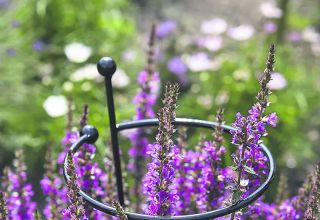April arrives and is suddenly one of the busiest times in the garden. It catches many gardeners out. But take things one step at a time and you’ll get what needs to be done finished. It’s important to take a few moments to sit in the sun, listen to the birds and plan your gardening. The lengthening days however do make it the perfect time to set up the garden for summer.
April, as they say, is the cruellest month with sun one minute and frosty mornings and bitter winds the next. In the April garden tender young leaves are prone to frost burn and judging what to do when is tricky. It’s all a question of timing but it’s certainly time to get sowing.
1. Watch out for soft fruit frost damage
Most top fruit and soft fruit are very hardy but once they start into growth in spring, flowers and buds are especially vulnerable to frost and may need protection to crop well.
Most potential fruit damage can be avoided by choosing a site where spring frosts are least likely, but this is seldom an option for gardeners:
Planting fruit in a sunny, sheltered position such as a south-facing wall – this is especially appropriate for early flowering crops such as apricots, peaches and nectarines.
Avoid frost pockets.
You might need to protect them with the following methods:
Soft fruit bushes: use fleece to cover and protect the flowers and developing crop on nights when frost is forecast.
Strawberries: protect with cloches or a double layer of fleece, removing or opening both in the day to allow pollinators access.
Small fruit trees: cover with fleece overnight to provide frost protection and remove during the day, but this is generally impractical with larger trees.
Fruit grown on walls and fences (cordon, espalier or fan-trained): cover with two or three layers of horticultural fleece, hessian or shade netting. This should be rolled up during the day. Use canes to keep the material off the blossoms. Remove the covers as soon as the danger is over.
Keep grass around trees mown short in the flowering season, as long grass prevents heat being radiated from the soil.
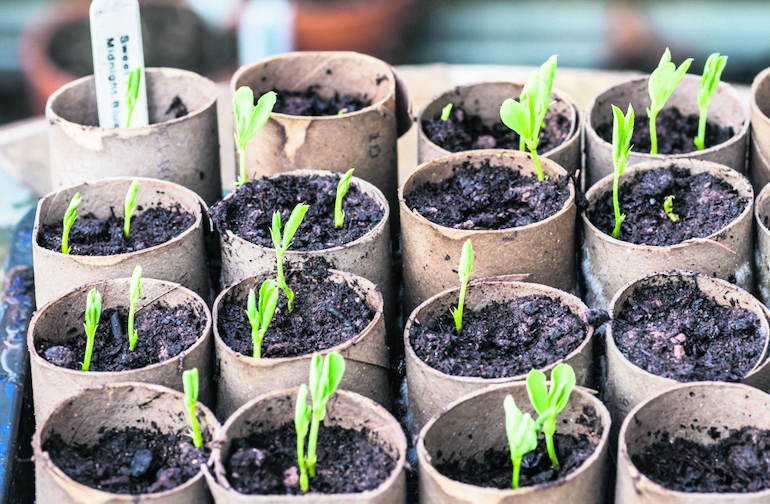
2. Flower seeds you can sow this month
If you haven’t already sown sweet peas now is your last chance. Sow into deep pots or root trainers as they dislike disturbance to their roots. Or, instead, look out for young plants in nurseries and garden centres. Check whether they are grown for scent or for cutting. Some longer stemmed varieties may smell less strongly.
Sow marigolds, petunias, nasturtiums, asters, zinnia and salvia indoors or in the greenhouse.
Outdoors you can sow native wildflowers and hardy annuals such as poppies and sunflowers.
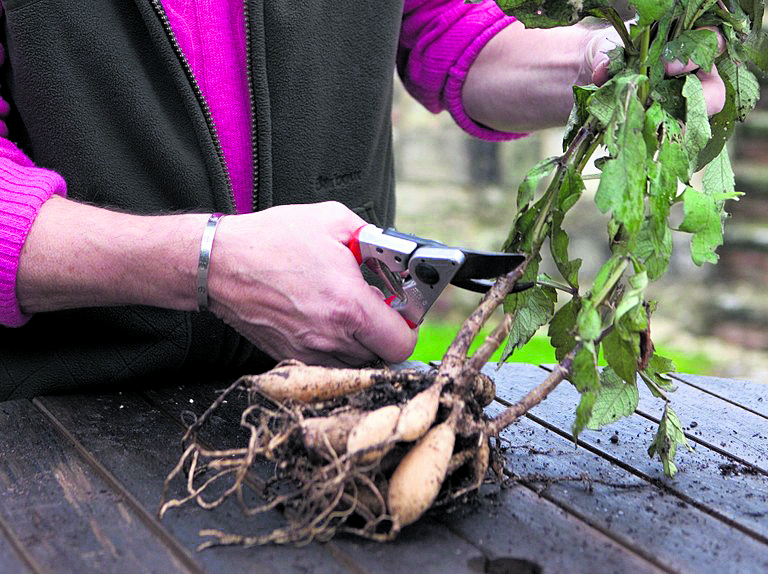
3. Plant dahlia tubers
Bringing dahlias in for the winter doesn’t just protect them against frost. It also allows them to dry out properly, and helps you bring them on a bit earlier. They’re now ready to be planted.
Give tubers a sprinkling of water in early spring, and they’ll start to produce young shoots in April.
Dig a planting hole, making sure it isn’t too deep. The shoots are still delicate, and you don’t want to damage them.
Gently pour coarse sand over the tubers; this prevents them from rotting and it’s also a great slug repellent.
Backfill with soil and add a ring of sand to mark the planting spot. It’s also another useful means of combating those pesky slugs and snails.
Write labels for each dahlia cultivar and place them correctly next to each plant; a foolproof way to remember what you’ve planted in a few months’ time.
4. More April garden jobs
Keep azaleas and rhododendrons looking good by pinching off fading flower heads above a new set of leaves.
Deadhead early flowering primulas as early as possible, as they tend to cross-breed very easily.
Early April is your last opportunity to hard-prune late-flowering shrubs.
Stake your perennials before it’s too late. Create attractive willow or hazel structures.
Remove pure green branches from variegated shrubs, such as eleagnus,privet and euonymus – cut them right back to the main stem with secateurs.
Start spraying roses using an organic-approved garlic formula; the key is to start early and spray often.
5. Harden-off greenhouse plants
Start hardening off greenhouse grown plants to give them a chance to toughen up and make them better able to withstand pests and weather. Choose a clement day to begin and start by putting them outside, out of cold winds, strong rain or sun and somewhere out of reach of marauding slugs. Allow a week or two before planting out, once all chance of frost has passed.
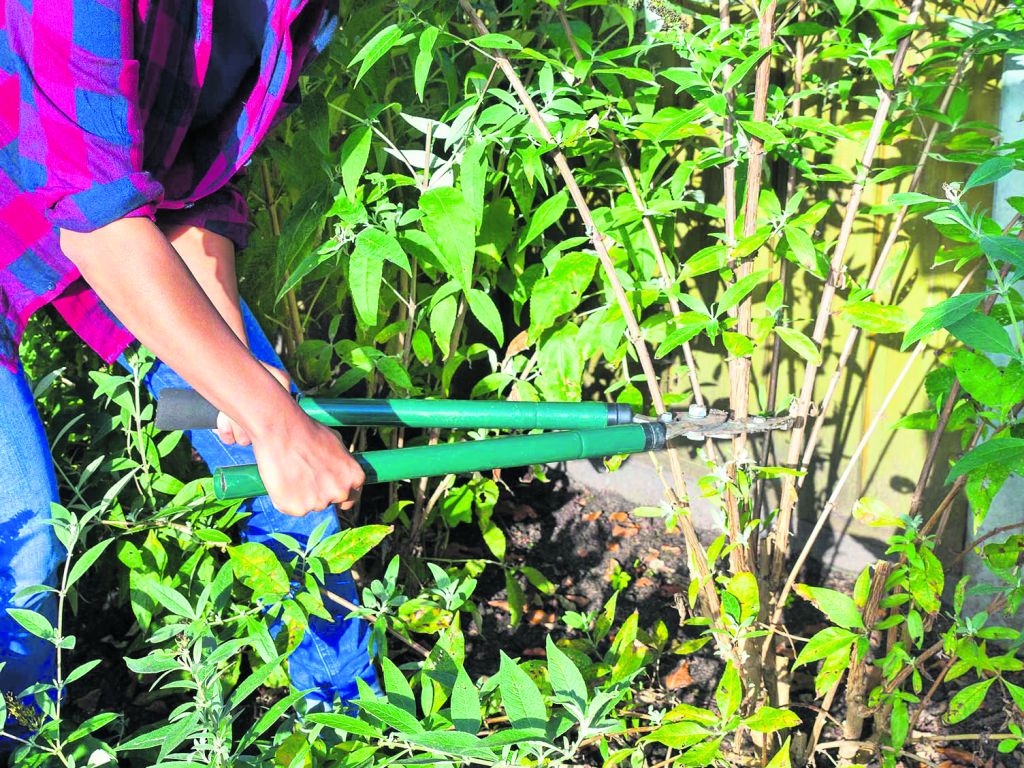
6. Prune buddleia down
Prune buddleia down to a woody framework about a foot high above ground. Watch out not to hurt your hands with the tough repetitive work. Loppers are often easier to use than secateurs.
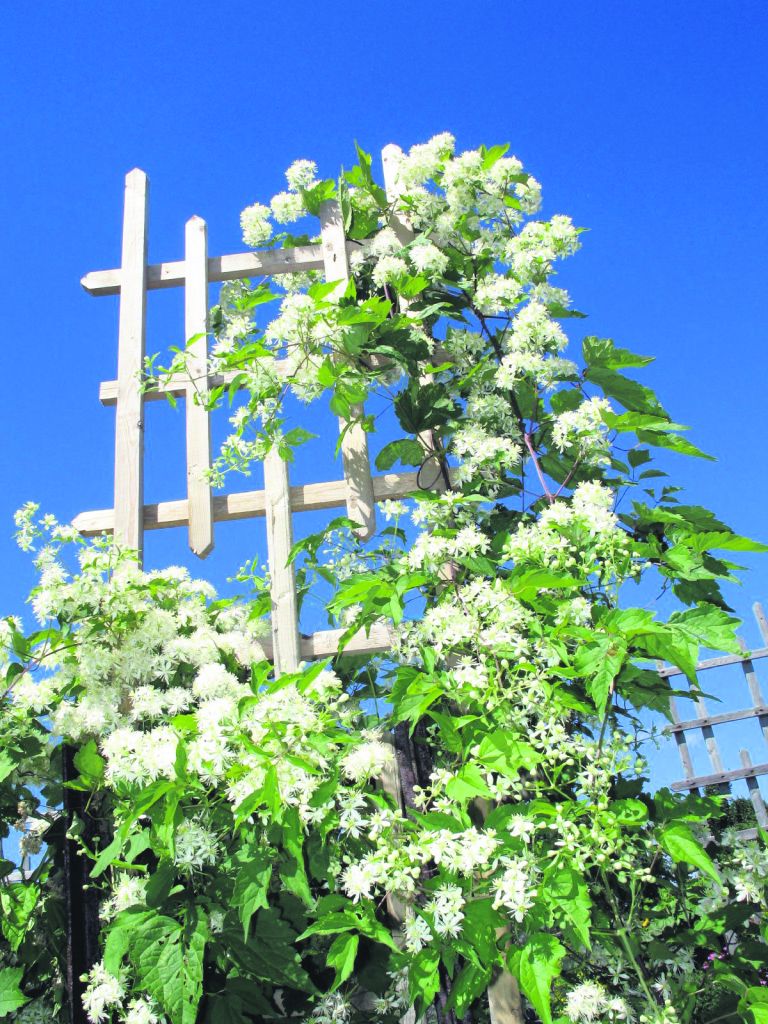
7. Your plants will soon need more support
Climbing plants head skywards as temperatures rise. Some, such as passion flowers, are masters of clinging on, using tendrils to firmly attach to supports. Others such as climbing roses and honeysuckle may need a little bit of help, especially if conditions are windy. Use garden twine or string to anchor new growth to supports. Installing trellis can help, too. Obelisks offer shelter and support for climbers while looking ornamental in borders.
In an ideal world one would only grow a handful of plants that need support, but in small gardens and where plants are drawn up to reach for light, this will be necessary. Hazel twigs are excellent, but steel hoops are most easily installed.
Make wigwams for sweet peas and climbing beans.
8. …and don’t forget to attend your fruit
To avoid risk of infection, stone fruits such as plum, cherry, peach, nectarine and apricot should only be pruned during the growing season. Prune late April, when the plants are in leaf and after flowering. Immediately seal all cuts greater than one centimetre with wound seal.
Repot your citrus in fresh citrus-specific compost. If you can’t find this, ericaceous is the next best thing.
Top dress blueberries grown in pots with ericaceous compost. It’s important to have two different varieties of blueberries to get good production – they will fruit without, but you’ll get a paltry quantity.
All soft fruits, for example strawberries, raspberries, redcurrants, blackcurrants, and gooseberries, will benefit from a mulch. Garden compost, leaf mould, organic manure, straw, hay and spent mushroom compost can all be used.
9. Give a boost to your garden soil
It’s one of the oldest clichés in gardening: the answer lies in the soil. And as all good gardeners know, it’s true! Improving soil now will pay dividends come summer, resulting in bigger crops and more flowers. Buy sacks of well-rotted manure and dig or fork it into border soil and vegetable patches (don’t let manure come into contact with stems of shrubs and plants). If you don’t have access to manure, the contents of your compost bin can work wonders. Open the access hatch at the bottom and if the material inside is brown and crumbly, it’s a nutrient-rich wonder that’s ready to be dug into soil.
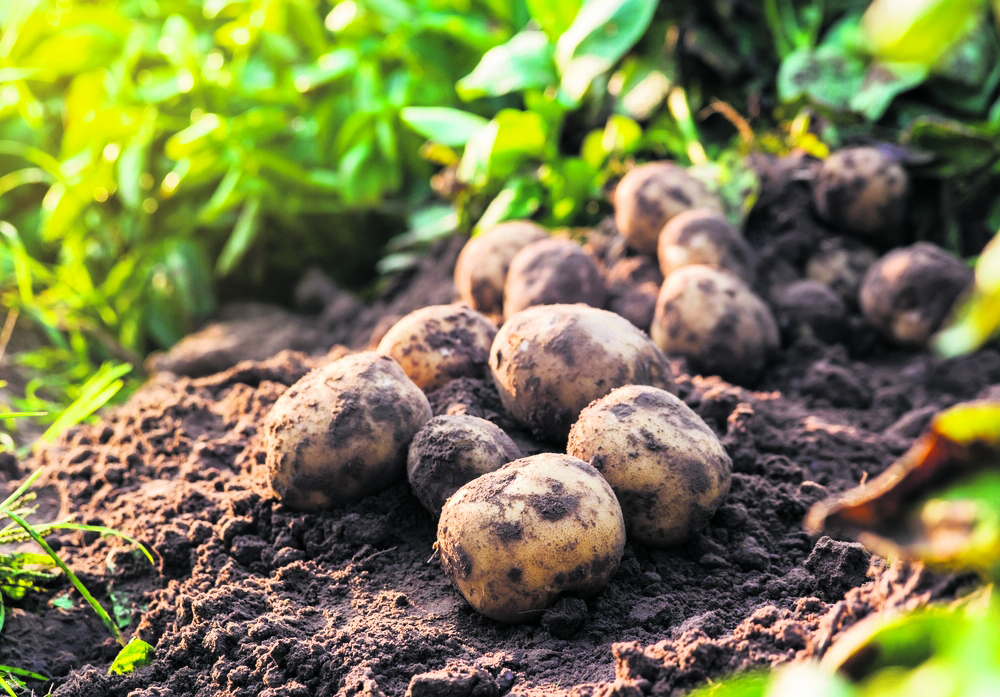
10. Time to get maincrop potatoes planted
April is the perfect time for planting maincrop potatoes. These varieties will be harvested in late September or early October and can be stored through the winter. They need more space than the early varieties so plant them 15cm deep, 40cm apart in rows 75cm apart. Once the shoots start to show, draw the soil from either side of the row to cover them and forming a triangular ridge. This process of burying the stems of plants will encourage the formation of more tubers.
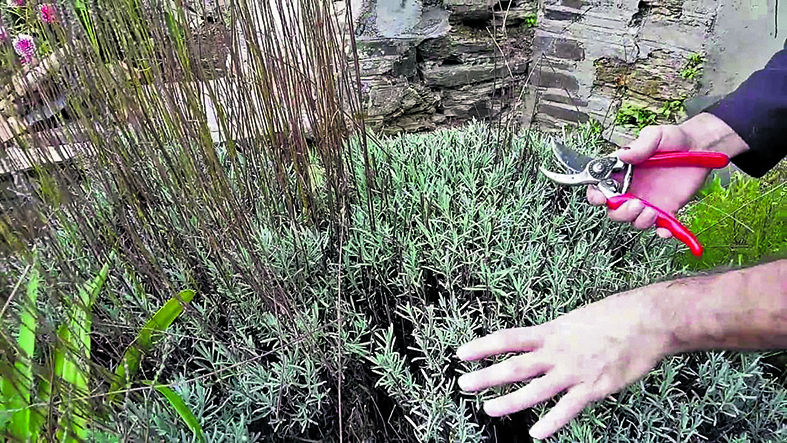
11. April is the time to cut back lavender
Some people say it’s best to cut lavender back in autumn but April is a better option, especially if you live in a frost-prone area. If you prune in autumn, all the new cuts you make will be exposed and open to infection through winter, but prune now and the plant can start growing quickly. Just turn a blind eye to the dead stems during the winter months. Lavenders are notorious for getting straggly and leggy and the best way to avoid that is to give them a really hard prune.
Look for the lowest little bud on each stem that’s about to sprout and cut just above it.
Also in April, you should plant new container-grown hedges, trees and shrubs to add structural elements to your garden.
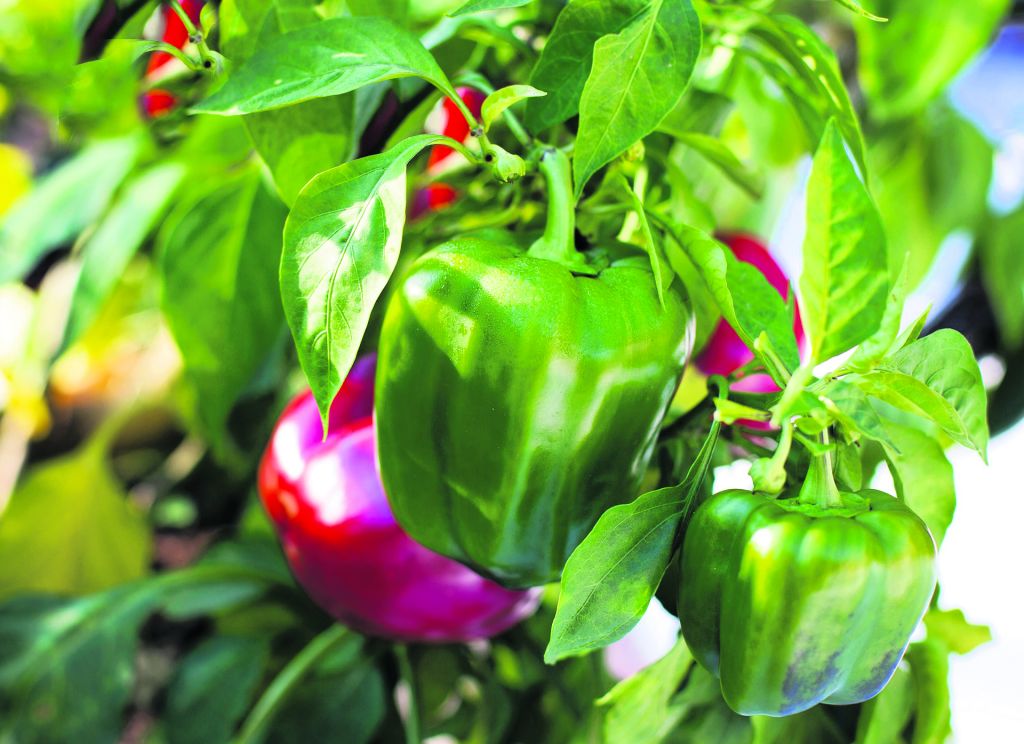
12. Sweet peppers are a must in any greenhouse
If you have a greenhouse, sweet peppers are a must. They’re one of the easiest crops to grow and have a multitude of uses in the kitchen – adding flavour and crunch to stir fries, summer salads and fajitas. Red, green and yellow varieties are commonly available. Seeds should be sown as soon as possible this month, placing seed trays or pots in a propagator at around 20°C. Once the first pair of leaves have formed, seedlings should be pricked-out into pots. Sweet peppers thrive under glass, but can also be grown in containers outdoors after all danger of frost has passed.
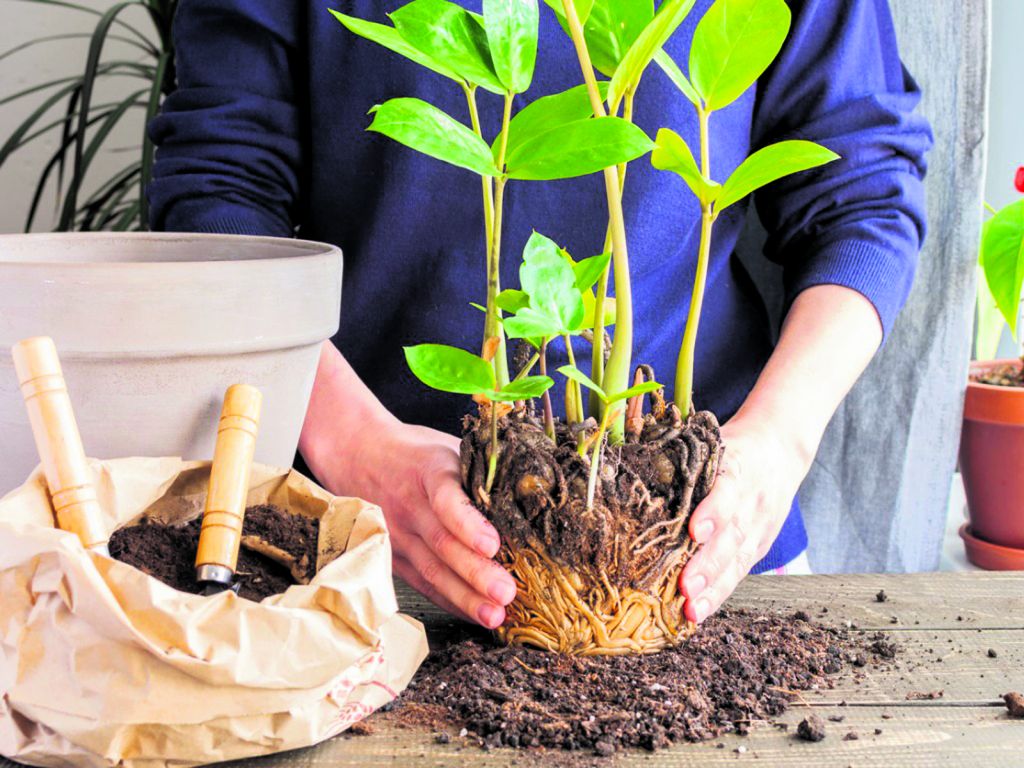
13. Re-pot your houseplants
As light levels increase and temperatures rise, houseplants put on new growth. Increase watering and start liquid feeding – general purpose feeds such as Baby Bio cater for a broad spectrum of houseplants, while specific feeds are available for orchids and citrus. If a houseplant looks unhappy and has been in its pot for two or more years, it may need to be re-potted (roots bursting from drainage holes at the bottom of the pot are a tell-tale sign). Choose a slightly larger pot and fill with houseplant or loam-based compost. Never use houseplant compost for orchids though, which need an open, bark-based orchid compost that allows air to reach the roots.






